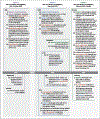Locally Acquired Melioidosis Linked to Environment - Mississippi, 2020-2023
- PMID: 38118023
- PMCID: PMC10773590
- DOI: 10.1056/NEJMoa2306448
Locally Acquired Melioidosis Linked to Environment - Mississippi, 2020-2023
Abstract
Melioidosis, caused by Burkholderia pseudomallei, is a rare but potentially fatal bacterial disease endemic to tropical and subtropical regions worldwide. It is typically acquired through contact with contaminated soil or fresh water. Before this investigation, B. pseudomallei was not known to have been isolated from the environment in the continental United States. Here, we report on three patients living in the same Mississippi Gulf Coast county who presented with melioidosis within a 3-year period. They were infected by the same Western Hemisphere B. pseudomallei strain that was discovered in three environmental samples collected from the property of one of the patients. These findings indicate local acquisition of melioidosis from the environment in the Mississippi Gulf Coast region.
Copyright © 2023 Massachusetts Medical Society.
Figures



References
-
- Currie BJ, Mayo M, Ward LM, et al. The Darwin Prospective Melioidosis Study: a 30-year prospective, observational investigation. Lancet Infect Dis 2021; 21: 1737–46. - PubMed
Publication types
MeSH terms
Grants and funding
LinkOut - more resources
Full Text Sources
